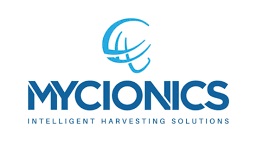Seafood mushroom is also known as Hypsizygus marmoreus. In Japan, it is called Crab mushroom for its tender, crisp texture and delicious flavor. Seafood mushroom is high in edible and medicinal value, it is packed with abundant amino acid and polysaccharide, regularly adding Seafood mushrooms to your diet can help ward off cancer, boost immune system, fight against the aging and extend your life.
Preparation of Compost: The permeability of compost is very important and it determines the growth speed and robustness of mycelia. Here are some formulas for your reference.
1. Broad leaves: Conifer Sawdust 79%, Bran 18%, Sugar 1%, Lime 1%, Gypsum Powder 1%, Water Content of 65%. (Ideal for main producing areas of sawdust.)
2. Cotton Hull 98%, Gypsum Powder 1%, Lime 1%, Water Content of 65%. (Ideal for main producing areas of cotton hull.)
3. Corncob 80%, Bran 12%, Corn Powder 5%, Gypsum Powder 1.5%, Lime 1.5%, Water Content of 65%. (Ideal for main producing areas of corncob.)
NOTES: Raw materials should be fresh and free from mould, corncob should be smashed into granules which are 3-4mm in diameter. Growers could take materials in accordance with local situation, choose the formula, accurately do the weighting, add water and mix well, and adjust it with lime water.
Bagging and Sterilization: Choose low-pressure polyethylene angle bag with a fold diameter of 17cm and 30-33cm in length. Growers could put 500g of dried materials in each bag and control the height of the bag at 18cm. Besides, be sure to master proper degree of tightness when bagging. After the bagging, do the sterilization under atmospheric pressure (100 degrees Celsius for 14-16 hours).
Cooling and Inoculation: For sterilized nutrient bags, when the temperature gets down to 60 degrees Celsius, timely remove into cooling room, when it drops to 30 degrees Celsius, implement the inoculation.
When it comes to the inoculation, all the procedures should be in accordance with aseptic technique. A 500ml of tank bottle can inoculate 25-30 bags of culture while a 250ml of water bottle inoculates 10-15 bags.
Mycelia Cultivation: After the inoculation, remove nutrient bags on previously-disinfected cultivation shelf, control the temperature at a range of 20-25 degrees Celsius, regulate relative air humidity at 60%-65%. Besides, ventilate the room 3-4 times per day and each time should be kept for at least 30 minutes. Through lightproof cultivation, mycelia become fully-grown in bags after 50 days or so.
After-mature Cultivation: After mycelia of Seafood mushroom completely grow up, be sure to go on the cultivation for 50 days at a temperature range of 20-25 degrees Celsius. Fruiting occurs when physiological maturity is reached and sufficient nutrients are kept.
Mycelium-stimulation and Water Injection: When fruiting season arrives, set up nutrient bags on the ground or bed shelf, untie the mouth, and allow for upright fruiting. And, lightly remove old mycelia on the surface of compost so as to stimulate the formation of sporocarps. It should be noted that the degree of mycelium-stimulation directly impacts the formation and output of sporocarps. After that, inject water into the bags, after 2 hours, empty it out and move on to next process.
Bud pressing: After setting up bags, cover non-woven fabric or newspaper in bag mouth and spray water to retain the moisture. And, keep the temperature of house at a range of 10-16 degrees Celsius, relative air humidity at 90%-95%, concentrations of carbon dioxide under 0.1%-0.2%. After 7 days of weak-light illumination (10-30lx), a layer of aerial mycelium grows on surface of material in bag mouth while a layer of mycoderm also forms, at this time, grower could regulate and control day and night temperature at 8 degrees Celsius. Within several days, mycoderm changes from white to gray, which indicates that primordia are about to form, then be sure to gradually enhance the humidity, improve the illumination to 50-100 lx. After 3-5 days, close primordia appear on surface of gray mycoderm, and they gradually differentiate into mushroom buds.





















